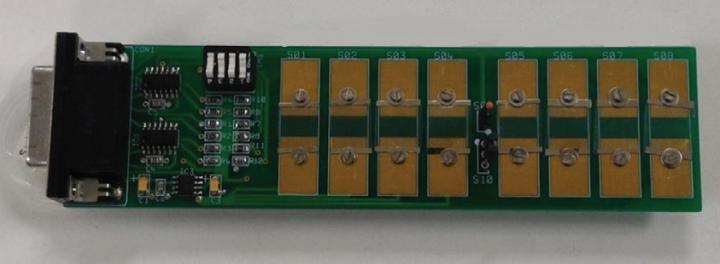
Credit: Sonia Freddi et al / Advanced Healthcare Materials
Researchers from Russia and Italy have proposed a compact sensor system that can implement the functionality of the electronic nose and developed a reproducible technology for its manufacture. This device is designed as flexible electronics that can analyze exhaled air, as well as identify pathologies of the respiratory tract and organs.
During the experiments, the device demonstrated high accuracy in determining patients with chronic obstructive pulmonary disease (COPD), an inflammatory disease of the respiratory tract, which increases the risk of complications when infected with COVID-19.
Chronic obstructive pulmonary disease (COPD) develops in the bronchial mucosa in response to pathogenic external factors and leads to a negative change in the functions of the respiratory tract. A person with COPD cannot receive the necessary oxygen, because the inhaled air flow is limited. COPD is commonly caused by gases and volatile particles, such as dust, tobacco, cadmium and silicon particles, and others. The methods for detecting this disease are complex and time consuming, which is inextricably linked to a threat to the patient’s health. Conventional methods for breath analysis, such as gas chromatography and mass spectroscopy, are expensive and time-consuming, so new approaches are required that are notable for their low cost and speed of testing. COPD is an urgent problem, as the disease may lead to the limitation of physical performance and disability of patients. It is important to note that people with COPD are most at risk for complications if they become infected with COVID-19.
“Malfunctioning of human organs causes a change in a number of processes in the metabolism, which affects the composition of exhaled air. Its analysis can be used to identify diseases of the respiratory system as well as other internal organs, such as the stomach,” explains Ivan Bobrinetskiy, Doctor of Science, project manager for the Russian Science Foundation grant, leading research associate of the National Research University of Electronic Technology. “The proposed concept of the electronic nose allows for operational monitoring and preliminary detection of diseases in just a few minutes. At the same time, the sensors are reusable, and the basic data and the identification of possible pathologies of organs are transferred from the device to digital mode using methods of statistical data analysis, including the capabilities of artificial intelligence. ”
The system is based on modified carbon nanotubes (CNTs), which allows the electronic nose to combine various desired properties. For example, flexible conductive films can be made from carbon nanotubes. Such films are needed in order to provide the system with a layer with a given electronic structure, which will be responsible for the operation of the device. “CNTs were synthesized by aerosol chemical vapor deposition and deposited in the form of thin transparent and conductive films. This technology is highly reproducible, easily scalable and allows applying films of nanotubes to any surface,” said Albert Nasibulin, professor at the Skolkovo Institute of Science and Technology, professor of the Russian Academy of Sciences. The development of the CNT manufacturing technology for the sensor system is also supported by a grant from the Russian Science Foundation.
The study of the effectiveness of the new system involved 12 patients with COPD and 9 healthy individuals in accordance with the rules of clinical trials. Breath sampling was carried out in disposable polytetrafluoroethylene (PTFE) plastic bags – made of a very inert material – containing a sensor matrix. The subjects inhaled and inflated the bag as much as possible through a plastic straw. When the straw was removed, the packages were sealed. The sensor matrix inside the bag was in contact with exhaled air for about three minutes, so that all sensors could fully work and interact with the gas molecules that characterize the pathology. Then the system was cleaned with dry air for the next study. Samples were collected from each participant with an interval of one hour.
Since the system detected all people with COPD, it can be argued that the device is effective. In the exhaled air, an increased concentration of nitrogen dioxide was detected. It should be noted that the gas content is less than one molecule per million molecules of the exhaled air, which indicates high sensitivity of the developed sensors.
Researchers have also successfully tested their system on gases that can characterize other diseases. The volatiles selected for this study (ammonia, nitrogen dioxide, sodium hypochlorite, water, benzene, hydrogen sulfide, acetone, ethanol and 2-propanol) are associated with specific diseases and can potentially be considered as their biomarkers. Thus, the content of 2-propanol, benzene, ethanol and acetone in exhaled air is increased in people with lung cancer, while acetone is found in patients with diabetes. A high concentration of ammonia in human breath is associated with liver or kidney diseases, and hydrogen sulfide has been proposed as a biomarker of asthma. It is shown that the concentration of sodium hypochlorite is an increased content in exhaled air in children with bronchial asthma and cystic fibrosis.
The studies were carried out together with colleagues from the Catholic University of the Sacred Heart (Italy), Aalto University (Finland), Biosense Institute in University of Novi Sad (Serbia).
###
Media Contact
Alina Chernova
[email protected]
Related Journal Article
http://dx.




